Geometric Sequence
A geometric sequence is a sequence of numbers where each term after the first is found by multiplying the previous term by a fixed, non-zero number called the common ratio. The general form of a geometric sequence is:
an = a1 * r(n-1)
Where:
- an = the nth term of the sequence
- a1 = the first term of the sequence
- r = the common ratio
- n = the term number
Finding the nth Term
To find the nth term of a geometric sequence, you can use the formula:
an = a1 * r(n-1)
Finding the Common Ratio
To find the common ratio of a geometric sequence, you can use the formula:
r = a2 / a1
Sum of a Geometric Sequence
The sum of the first n terms of a geometric sequence can be found using the formula:
Sn = a1 * (1 - rn) / (1 - r)
Example
Let's consider a geometric sequence with a first term of 3 and a common ratio of 2. Find the 5th term and the sum of the first 5 terms.
Using the formula an = a1 * r(n-1), we find:
a5 = 3 * 2(5-1) = 3 * 24 = 3 * 16 = 48
Using the formula Sn = a1 * (1 - rn) / (1 - r), we find:
S5 = 3 * (1 - 25) / (1 - 2) = 3 * (1 - 32) / (1 - 2) = 3 * (-31) / (-1) = 93
Practice Problems
.◂Math Worksheets and Study Guides Seventh Grade. Exponents, Factors and Fractions

 Worksheet/Answer key
Worksheet/Answer key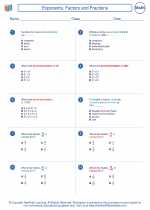
 Worksheet/Answer key
Worksheet/Answer key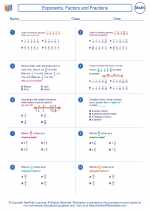
 Worksheet/Answer key
Worksheet/Answer key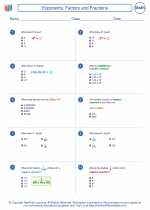
 Worksheet/Answer key
Worksheet/Answer key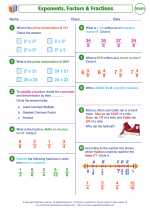
 Worksheet/Answer key
Worksheet/Answer key
 Worksheet/Answer key
Worksheet/Answer key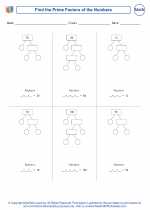
 Worksheet/Answer key
Worksheet/Answer key
 Worksheet/Answer key
Worksheet/Answer key
